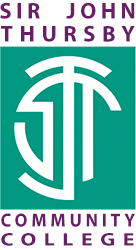Topic 5 Year 8 Computing
| Computing | |||
| Topic | Boolean Logic | ||
| No of lessons | 5 | ||
| When is it happening | Year 8 Term 3 | ||
| What will students learn | Students will understand simple Boolean logic [for example, AND, OR and NOT] and some of its uses in circuits and programming. This topic will focus on the aspect of circuits. | ||
| Key Knowledge that students should know at the end of 'Topic' | This is the knowledge that students will meet for the first time in this topic | Students can: define a circuit, identify devices which have circuits, explain why circuits are required, explain what a logic gate is and how they work i.e. receive, apply and output, identify three logic gates - AND, OR, NOT, be able to produce for each logic gate the truth table and logic diagram, interpret a logical statement for multiple logic gates and produce the truth table and logic diagram | |
| This is knowledge that students may have met before but will need to deepen their understanding | Students will have covered Boolean Operators i.e. AND, OR, in the Programming Fundamentals units. Also, they have knowledge of Binary, 0 and 1, and how computers use to communicate, from previous unit, Data Representation 1. | ||
| Key Skills that students should be able to demonstrate at the end of 'Topic' | This is the skills that students will meet for the first time in this topic | Students can implement and test single and multiple level logic gates' truth tables and logic diagrams on a package such as logic.ly | |
| This is skills that students may have met before but will need to develop | NA | ||
| Key vocabulary that students should know and understand |
Circuit, NOT, Logic Diagram, Truth Table, Logical Statement Digital Device, Binary, Boolean Operators, AND, OR, Symbol, Input, Output, Opposite, Combining, Single, Multiple, Bracket |
||
| The Big Question | How do computer circuits work? | ||
|
Key questions that students should be able to answer at the end of the 'Topic' |
What is a computer circuit? | ||
| How can I combine logic gates to make complex logic gates? | |||
